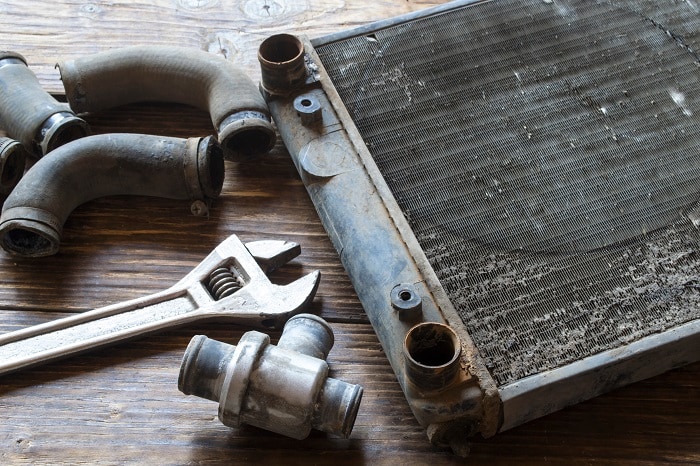Understanding the Differences in Types and Colors of Antifreeze
A Comprehensive Guide
When it comes to maintaining your vehicle, antifreeze plays a crucial role in ensuring that your engine stays in peak condition regardless of the weather. From regulating temperature to preventing corrosion, antifreeze is an essential component of your car's cooling system. However, not all antifreeze is created equal, and understanding the differences between types and colors is vital for keeping your vehicle running smoothly. At Central Vermont Auto Mart's Montpelier dealership, we're here to help you make sense of it all-and take care of all your vehicle maintenance needs.

What is Antifreeze and What Does It Do?
Antifreeze, also known as coolant, is a fluid that helps regulate the temperature of your vehicle's engine. It prevents the engine from overheating in hot weather and from freezing in cold weather. Here are some key roles antifreeze plays:
- Temperature Regulation: Maintains an optimal engine temperature across various driving conditions.
- Corrosion Prevention: Contains additives to protect metal components of the cooling system from rust and corrosion.
- Lubrication: Helps lubricate the water pump and seals in the cooling system.
- Freezing and Boiling: Lowers the freezing and raises the boiling point of the coolant mixture, enabling it to operate within a wider range of engine temperature needs.
Proper maintenance of your vehicle's antifreeze levels ensures that these functions are carried out effectively, protecting your engine and extending its life.
Types of Antifreeze: Characteristics and Advantages
Not all antifreeze is the same. Manufacturers use different formulations to suit various engine types, needs and conditions. This diversity emerged as vehicle technology advanced, addressing the unique needs of different cooling systems. No longer was the traditional old green colored one type works in all vehicle's antifreeze a viable option anymore. This early antifreeze formulation relied heavily on ethylene glycol for its excellent freeze and boil protection but concerns about corrosion in modern engines led to the development of innovative blends like OAT and HOAT. These advancements ensure that each antifreeze type meets the specific demands of contemporary engines, protecting against rust, wear, and extreme temperatures. Understanding these differences helps vehicle owners make informed maintenance decisions. Decisions that could save you thousands of dollars in more costly repairs from using the wrong type of engine protection. Below are the main types of antifreeze:
Inorganic Acid Technology (IAT)
Characteristics: Traditional antifreeze used in older vehicles. Typically, green in color.
Advantages: Contains silicates and phosphates that provide excellent corrosion protection.
Best Suited For: Older vehicles and certain American-made models.
Downside: Requires frequent replacement (every 2-3 years or 30,000 miles).
Organic Acid Technology (OAT)
Characteristics: Used in modern vehicles. Common colors include orange, pink, or dark green.
Advantages: Free of silicates and phosphates, offering long-lasting protection against corrosion.
Best Suited For: GM, Honda, and Toyota vehicles.
Downside: Incompatible with IAT coolant.
Hybrid Organic Acid Technology (HOAT)
Characteristics: A combination of IAT and OAT properties. Colors include yellow, turquoise, or pink.
Advantages: Balances long-lasting protection with superior cooling capabilities.
Best Suited For: Chrysler, Ford, and European brands like BMW and Mercedes-Benz.
Downside: Should not be mixed with other coolant types.
Phosphate-Free Coolants
Characteristics: Largely used in European vehicles. Often blue or purple.
Advantages: Designed to work with aluminum components, common in European car engines.
Best Suited For: European brands like Volkswagen, Audi, and BMW.
Downside: Limited compatibility with other types.
Antifreeze Colors: What Do They Mean?
The color of antifreeze isn't just cosmetic; it often signifies the type and formulation. This color-coding was introduced to simplify identification and ensure compatibility with specific vehicle cooling systems. Historically, green antifreeze (IAT) was the standard for decades until advances in automotive technology necessitated newer formulations. These newer types, such as OAT and HOAT, introduced a broader range of colors to denote their unique chemical properties and vehicle applications.
Today, while the color can provide helpful clues, relying solely on it may be misleading due to overlaps or variations by manufacturer. Always double-check your vehicle's specifications or consult a professional when in doubt. Here's a quick reference table:
| Color | Type | Key Characteristics |
|---|---|---|
| Green | IAT | Traditional, suitable for older vehicles. |
| Orange | OAT | Long-lasting, used in modern vehicles. |
| Pink | OAT/HOAT | Common in Asian and European vehicles. |
| Yellow | HOAT | Found in some Ford and Chrysler vehicles. |
| Blue | Phosphate-Free (OAT) | Designed for European vehicles with aluminum parts. |
| Purple | Phosphate-Free (OAT) | Advanced corrosion resistance for select engines. |
| Turquoise | HOAT | Hybrid blend with silicate protection. |
How Often Should Antifreeze Be Changed?
The frequency of antifreeze replacement depends on the type of coolant and your vehicle's manufacturer recommendations. Here's a general guide:
IAT Coolant: Replace every 2-3 years or 30,000 miles.
OAT Coolant: Replace every 5 years or 50,000 miles.
HOAT Coolant: Replace every 5 years or 60,000 miles.
Phosphate-Free Coolant: Replace every 4-5 years or 40,000-50,000 miles.
Signs You May Need a Coolant Change:
- Overheating engine.
- Discolored or rusty coolant.
- Unusual smells or leaks under the hood.
At Central Vermont Auto Mart, we offer coolant flush services tailored to your vehicle's specific needs. Regular maintenance ensures your engine stays protected year-round. Have questions, let us help.
What Happens If You Mix Antifreeze Types?

Mixing different types of antifreeze can lead to serious problems, including:
- Gelling or Sludging: Incompatible formulations can react, causing the coolant to gel or form sludge. This blockage can impair coolant flow, leading to severe issues such as clogged radiators and heater cores. In many cases, these components cannot be flushed and must be replaced. The cost of a radiator replacement typically ranges from $500 to $1,000, while replacing a heater core can cost upwards of $1,500 due to the labor-intensive process.
- Reduced Corrosion Protection: Mixing antifreeze types can neutralize the additives designed to prevent rust and corrosion, exposing metal components in your cooling system to accelerated deterioration. Corrosion can lead to leaks in critical areas like the water pump or the head gasket, with repair costs that can exceed $2,000.
- Overheating: Compromised coolant effectiveness can cause the engine to overheat. Persistent overheating can result in warped engine heads, a blown head gasket, or even catastrophic engine failure. The cost of replacing engine heads can range from $3,000 to $5,000, while a full engine replacement may cost over $10,000.
These potential issues highlight the importance of using the correct antifreeze and maintaining your cooling system regularly. If you're unsure about your vehicle's antifreeze needs, our experienced service team at Central Vermont Auto Mart is here to help.
Pro Tip: Always use the recommended antifreeze for your vehicle. If you're unsure, our service team at Central Vermont Auto Mart is here to help. We'll flush and refill your cooling system with the right coolant for optimal performance.
Why Choose Central Vermont Auto Mart for Antifreeze Maintenance?
At our Montpelier dealership, we're committed to keeping your vehicle in top condition. Here's why customers trust us for their maintenance needs:
- Expert Technicians: Our team is trained to service most makes and models.
- High-Quality Products: We use OEM-approved antifreeze and coolants.
- Comprehensive Services: From coolant flushes to full system inspections, we've got you covered.
- Convenient Location: Serving Montpelier, Barre, and surrounding areas at 365 River Street, halfway between Barre and Montpelier, across from Tractor Supply.
- Clean Comfortable Waiting Area with free wi-fi, bottled water, coffee, snacks, television, magazines and even treats for friendly dogs.
Schedule Your Antifreeze Service Today!
Don't wait for an overheating engine or a freezing cold morning to realize your antifreeze needs attention. Visit Central Vermont Auto Mart in Montpelier for professional, reliable service. Schedule your appointment today and let us help you keep your vehicle running smoothly all year long!
